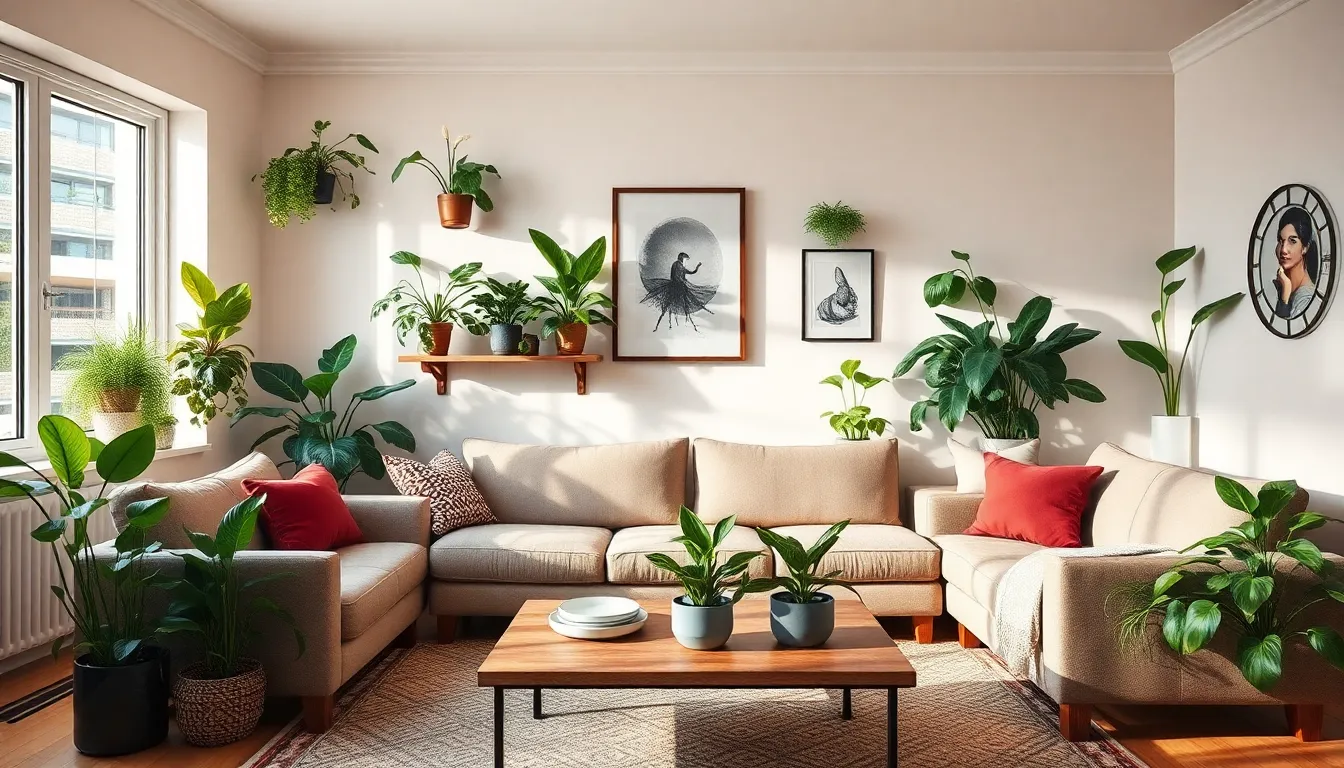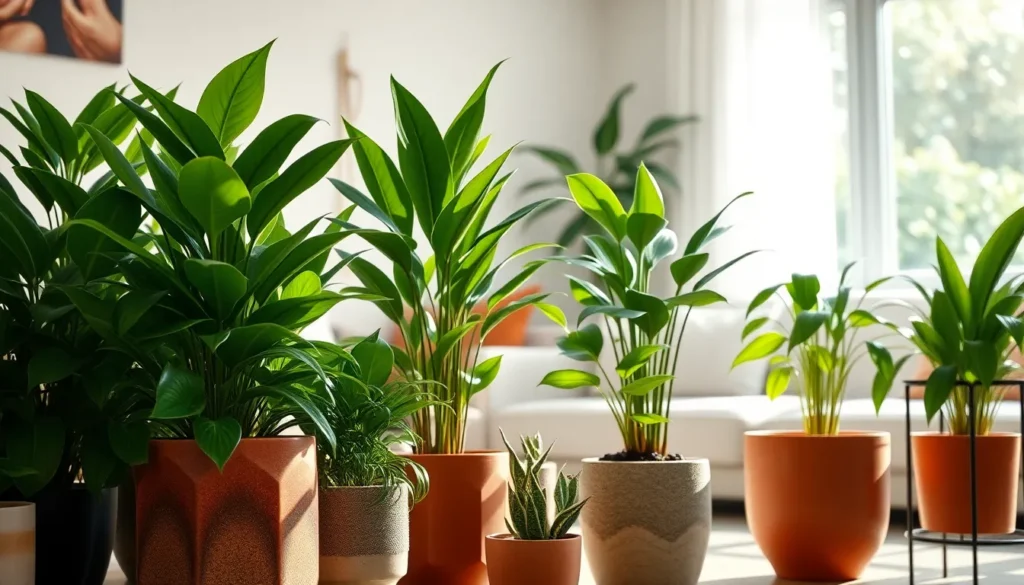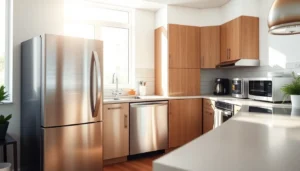Table of Contents
ToggleImagine transforming your home into a lush sanctuary without needing a degree in botany or a sun-drenched balcony. Low light house plants are the perfect solution for anyone who wants to add a dash of green to their space without the pressure of perfect lighting. These resilient beauties thrive in dim corners, proving that even plants can be introverts.
Not only do they brighten up your home, but they also improve air quality and boost your mood. Plus, they won’t judge you for forgetting to water them every now and then. Whether you’re a seasoned plant parent or a total newbie, low light house plants offer an easy way to bring life to your space. So why not embrace your inner plant whisperer and let these leafy companions flourish in the shadows?
Overview of Low Light House Plants
Low light house plants thrive in dim conditions, offering a solution for spaces with limited natural light. These plants adapt well to indoor environments, making them accessible for various settings, such as apartments or offices. Noteworthy examples include the snake plant, pothos, and ZZ plant, all of which require minimal sunlight.
Such plants provide more than just visual appeal. Air quality benefits come from their ability to filter toxins, improving the overall atmosphere of a room. Elevated mood often follows the introduction of greenery, creating a calming environment that promotes relaxation.
Caring for low light plants proves easy, appealing to both novice and seasoned gardeners. Watering needs typically align with the specific species, but generally, infrequent watering suffices. Overwatering poses a risk, so checking soil moisture ensures healthy growth.
Seasonal adjustments are also important. During the growing season, many low light plants may need slightly more attention, while dormancy in winter calls for reduced care. Fertilizing routines can vary based on growth stages; however, using a diluted fertilizer during active growth supports vitality.
Diversity and resilience characterize low light house plants, making them versatile additions to any indoor space. Incorporating these plants can foster a vibrant green sanctuary, transforming ordinary areas into inviting, rejuvenating retreats.
Benefits of Low Light House Plants

Low light house plants offer several advantages that make them ideal for various indoor environments. These plants not only enhance living spaces but also contribute positively to occupants’ well-being.
Improved Air Quality
Low light house plants significantly improve indoor air quality. They filter harmful toxins such as formaldehyde, benzene, and carbon monoxide, creating a cleaner atmosphere. Research shows that plants like snake plants and ZZ plants can absorb up to 87% of indoor pollutants within 24 hours. Increased oxygen levels also promote a healthier environment, thereby enhancing respiratory function. Clean air contributes to overall wellness and may reduce stress levels, making these plants essential for any home or office.
Aesthetic Appeal
Low light house plants provide an aesthetic boost to any interior. Their lush greenery adds vibrant color to spaces, creating a welcoming atmosphere. Varieties such as pothos and peace lilies thrive in low light conditions, making them perfect decorations for dimly lit rooms. Incorporating these plants into home decor enhances visual interest and brings a sense of tranquility. Custom arrangements or simply placing them on shelves allows for versatile styling options that cater to personal taste and interior design.
Popular Low Light House Plants
Low light house plants offer an ideal solution for enhancing indoor spaces without requiring abundant natural light. Several varieties thrive in dim conditions while adding beauty and improving air quality.
Snake Plant
Snake plants, known for their striking upright leaves, adapt easily to low light. They tolerate neglect and only need watering every few weeks. Recognized for their air-purifying properties, snake plants efficiently filter indoor toxins. Studies indicate these plants can eliminate up to 87% of pollutants within 24 hours. Their hardy nature makes them perfect for beginners and experienced plant owners alike. Positioning them in corners or tight spaces can enhance aesthetic appeal.
Pothos
Pothos plants feature vibrant green and yellow marbled leaves, making them a popular choice for low-light areas. This variety thrives in indirect sunlight and requires minimal care. Pothos can grow in various conditions, whether in hanging baskets or trailing down shelves. They improve indoor air quality by absorbing harmful compounds, contributing to a healthier environment. Watering this plant when the soil dries out ensures optimal growth and prevents overwatering. Versatility and ease of care make pothos an excellent addition to any indoor setting.
ZZ Plant
ZZ plants, characterized by their glossy leaves, require minimal light and care. They flourish in low-light conditions, making them suitable for offices and dark corners of the home. This plant thrives on infrequent watering, with drought tolerance being a key feature. Varieties of ZZ plants can survive for months without water, which is ideal for busy individuals. Research highlights their ability to improve air quality, making it a functional yet attractive choice. The ZZ plant’s unique structure adds intrigue to any indoor plant collection.
Care Tips for Low Light House Plants
Low light house plants require specific care for optimal growth. Maintaining proper conditions ensures these resilient plants thrive in dim environments.
Watering Guidelines
Watering low light house plants involves consistency and attention. Check soil moisture levels regularly; it’s best to water when the top inch of soil feels dry. Use room temperature water to avoid shocking the plants, and allow excess water to drain to prevent root rot. During the growing season, some species may need watering every two weeks, while others require less frequent attention. Overwatering poses risks, so keeping a schedule unique to each plant type helps prevent problems.
Soil and Potting
Selecting the right soil mix significantly impacts plant health. A well-draining potting mix suits most low light house plants. Combining regular potting soil with perlite or sand improves aeration and drainage. Choose pots with drainage holes to allow excess moisture to escape, which reduces the risk of root rot. Repotting should occur every one to two years to refresh the soil and provide plants with more space for growth.
Fertilization Strategies
Proper fertilization supports healthy growth in low light conditions. Using a diluted, balanced liquid fertilizer every four to six weeks during the growing season provides essential nutrients. Reducing fertilization in winter aligns with the plants’ slower growth rates. Organic options, like worm castings or fish emulsion, foster healthy plant development without the risk of over-fertilizing. Observing the plants for signs of nutrient deficiency helps guide adjustments in fertilization practices.
Low light house plants offer a perfect solution for those seeking to brighten up dim spaces. Their resilience and minimal care requirements make them accessible for everyone. With a variety of options available like snake plants and pothos, anyone can find a plant that fits their style and environment.
These plants not only enhance the beauty of a room but also contribute to improved air quality and overall well-being. By incorporating low light plants into their homes, individuals can create a serene and inviting atmosphere that promotes relaxation. Embracing these green companions can transform any indoor space into a lush oasis, proving that even the shadiest corners can flourish with life.







